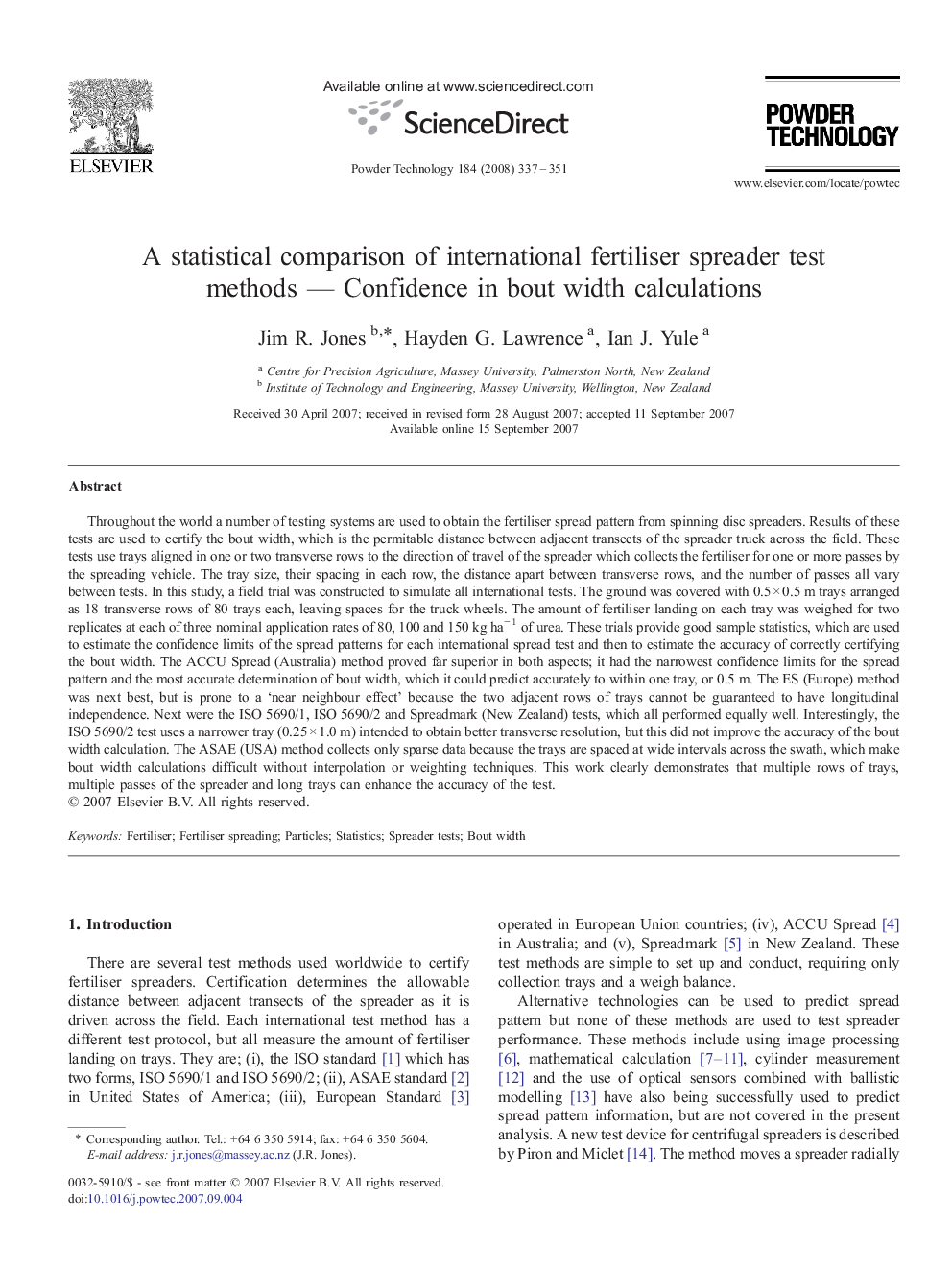| کد مقاله | کد نشریه | سال انتشار | مقاله انگلیسی | نسخه تمام متن |
|---|---|---|---|---|
| 238785 | 465773 | 2008 | 15 صفحه PDF | دانلود رایگان |

Throughout the world a number of testing systems are used to obtain the fertiliser spread pattern from spinning disc spreaders. Results of these tests are used to certify the bout width, which is the permitable distance between adjacent transects of the spreader truck across the field. These tests use trays aligned in one or two transverse rows to the direction of travel of the spreader which collects the fertiliser for one or more passes by the spreading vehicle. The tray size, their spacing in each row, the distance apart between transverse rows, and the number of passes all vary between tests. In this study, a field trial was constructed to simulate all international tests. The ground was covered with 0.5 × 0.5 m trays arranged as 18 transverse rows of 80 trays each, leaving spaces for the truck wheels. The amount of fertiliser landing on each tray was weighed for two replicates at each of three nominal application rates of 80, 100 and 150 kg ha− 1 of urea. These trials provide good sample statistics, which are used to estimate the confidence limits of the spread patterns for each international spread test and then to estimate the accuracy of correctly certifying the bout width. The ACCU Spread (Australia) method proved far superior in both aspects; it had the narrowest confidence limits for the spread pattern and the most accurate determination of bout width, which it could predict accurately to within one tray, or 0.5 m. The ES (Europe) method was next best, but is prone to a ‘near neighbour effect’ because the two adjacent rows of trays cannot be guaranteed to have longitudinal independence. Next were the ISO 5690/1, ISO 5690/2 and Spreadmark (New Zealand) tests, which all performed equally well. Interestingly, the ISO 5690/2 test uses a narrower tray (0.25 × 1.0 m) intended to obtain better transverse resolution, but this did not improve the accuracy of the bout width calculation. The ASAE (USA) method collects only sparse data because the trays are spaced at wide intervals across the swath, which make bout width calculations difficult without interpolation or weighting techniques. This work clearly demonstrates that multiple rows of trays, multiple passes of the spreader and long trays can enhance the accuracy of the test.
A number of international test methods are used to certify spinning disc spreaders for fertiliser spreading. In this study, all test methods are reconstructed using statistics collected in a large field trial using 1400 trays laid out on the ground. Tests were conducted for urea at three nominal application rates of 80, 100 and 150 kg ha− 1. The statistics are used to estimate the confidence limits of the spread patterns for each international spread test and then to estimate the accuracy of correctly certifying the bout width. The ACCU Spread (Australia) method proved far superior in both aspects; it had the narrowest confidence limits for the spread pattern and the most accurate determination of bout width, which it could predict accurately to within one tray, or 0.5 m. This work clearly demonstrates that multiple rows of trays, multiple passes of the spreader and long trays can enhance the accuracy of the test.Figure optionsDownload as PowerPoint slide
Journal: Powder Technology - Volume 184, Issue 3, 2 June 2008, Pages 337–351